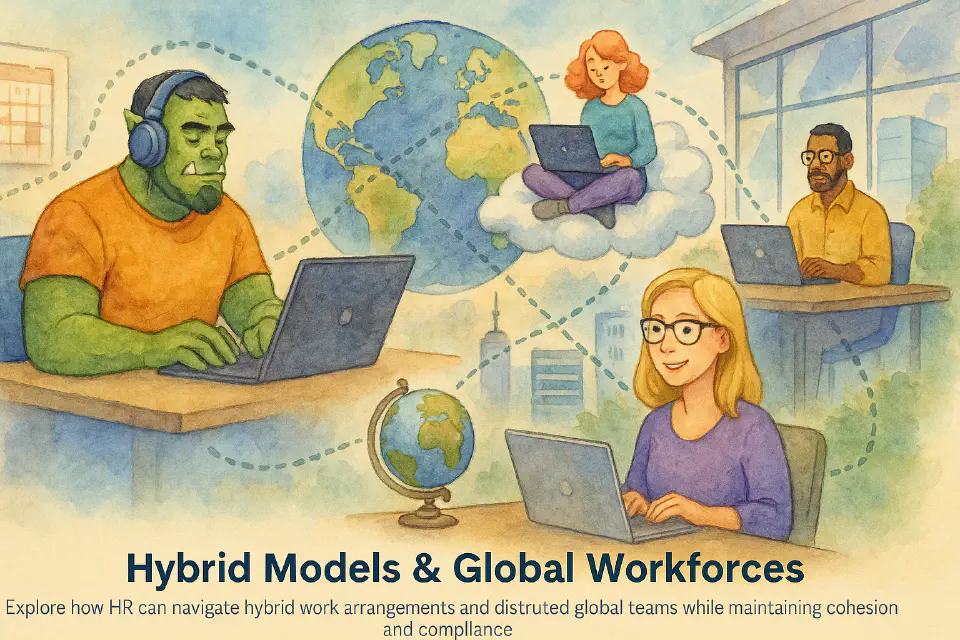
Hybrid Models & Global Workforces
Work is no longer tied to one office or one contract. HR must manage a patchwork of models—without losing the thread.
What Are Hybrid and Global Workforce Models?
These models are often layered with various contract types—full-time, freelance, contractor—depending on local laws, tax regimes, and talent availability.
Why They’re Increasing
- Talent expectations (flexibility, autonomy)
- Business continuity post-COVID
- Global recruitment to fill skill gaps
- Cost optimization (labor arbitrage)
- Tech enabling asynchronous collaboration
Challenges for HR
| Domain | Challenge |
|---|---|
| Legal | Cross-border compliance, permanent establishment risk |
| Payroll & Benefits | Inconsistent eligibility, taxation differences |
| Culture & Belonging | Inclusion across locations and time zones |
| Performance | Aligning goals, feedback, and progression globally |
| Communication | Avoiding silos and knowledge loss |
Managing Across Borders
Key Considerations
- Employment law varies per country
- Social security rules are often territorial
- IP rights may differ by jurisdiction
- Work permits and tax status must be verified
Tools like Global Employer of Record (EOR) platforms can simplify risk, but come with cost and vendor lock-in.
Example: Hiring a Developer in Brazil for a Czech Company
| Option | Implication |
|---|---|
| Direct contract | May trigger local tax obligations |
| Freelancer (B2B) | Risk of misclassification |
| Via EOR (e.g., Deel) | Legally safe, but adds monthly fee |
| Establish legal entity | Complex, only for larger operations |
Building a Cohesive Hybrid Culture
What Works
- Define clear norms (meeting times, availability, language)
- Ensure equal access to development and leadership roles
- Use async tools: Notion, Loom, Slack with timezone awareness
- Rotate in-person meetings (quarterly, annually)
Hybrid Roles and Flexibility by Design
- Design job descriptions that state remote eligibility
- Set expectations for collaboration hours
- Avoid proximity bias in performance reviews
- Clarify tools, reporting lines, and legal structure at hiring
HR Infrastructure Needed
- Global mobility policies
- HRIS that supports multi-country setups
- Tax and immigration support
- Payroll compliance tools
- Contingent workforce tracking
Final Thought
Global and hybrid work is not a trend—it’s the new infrastructure.
HR must rebuild systems, not just patch policies to lead in this environment.
📂 Categories:
HR Essentials